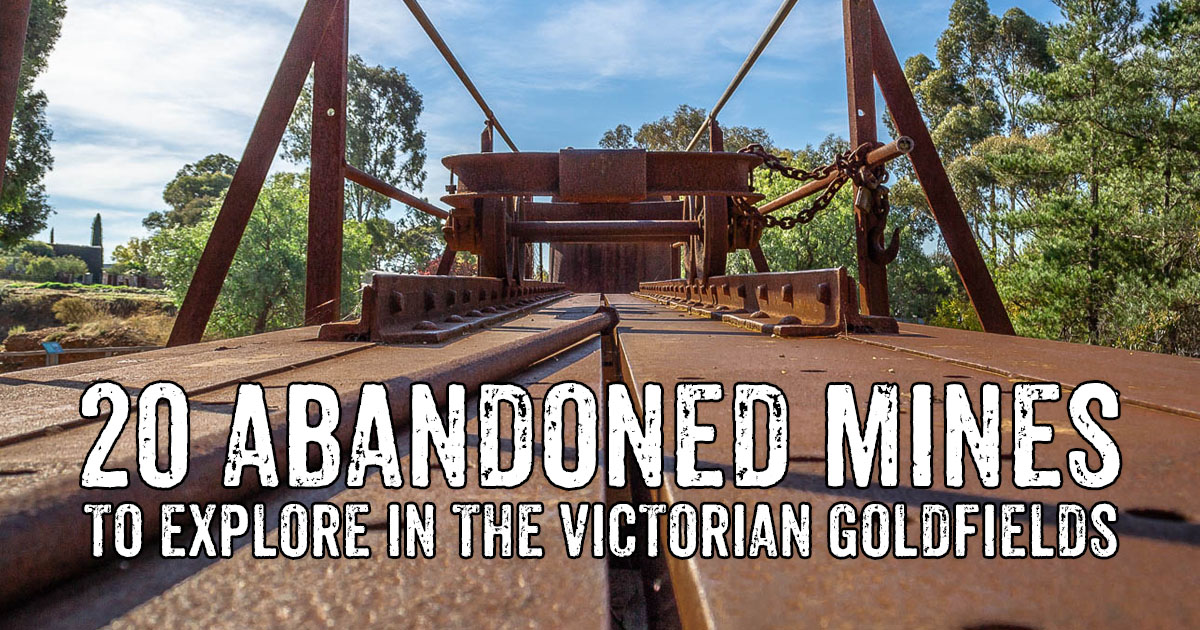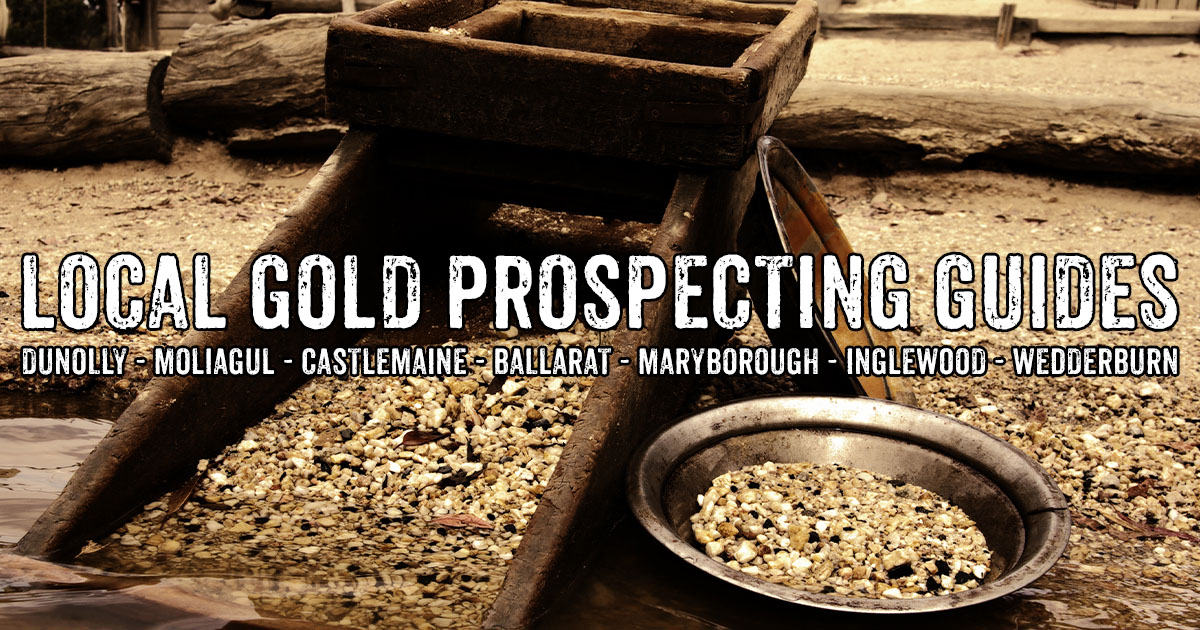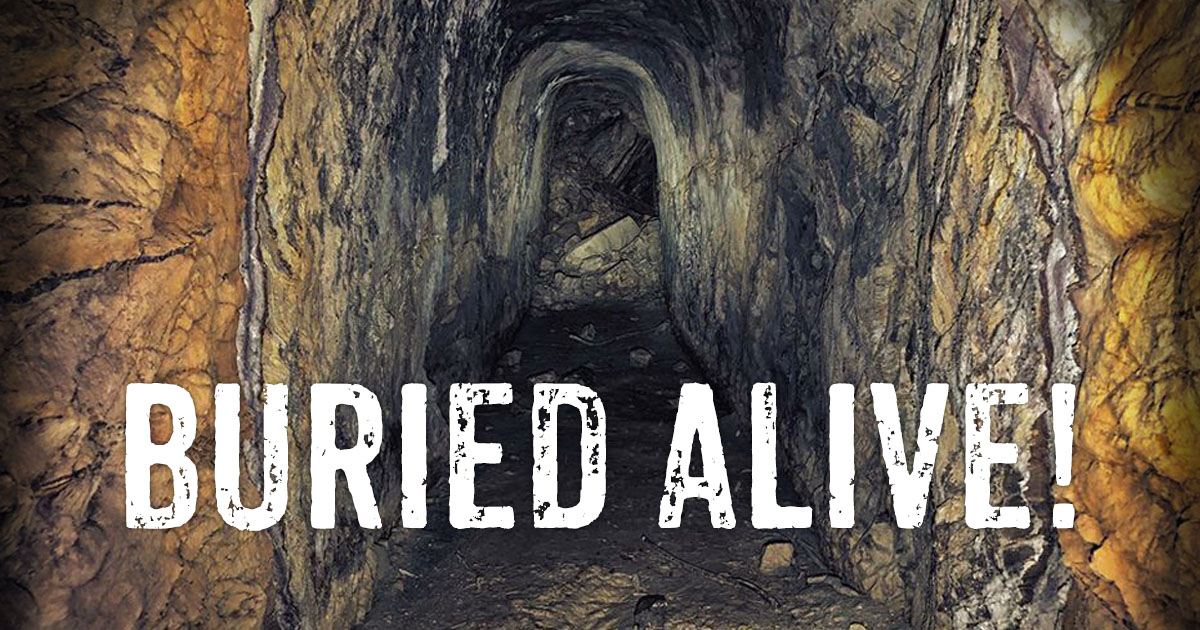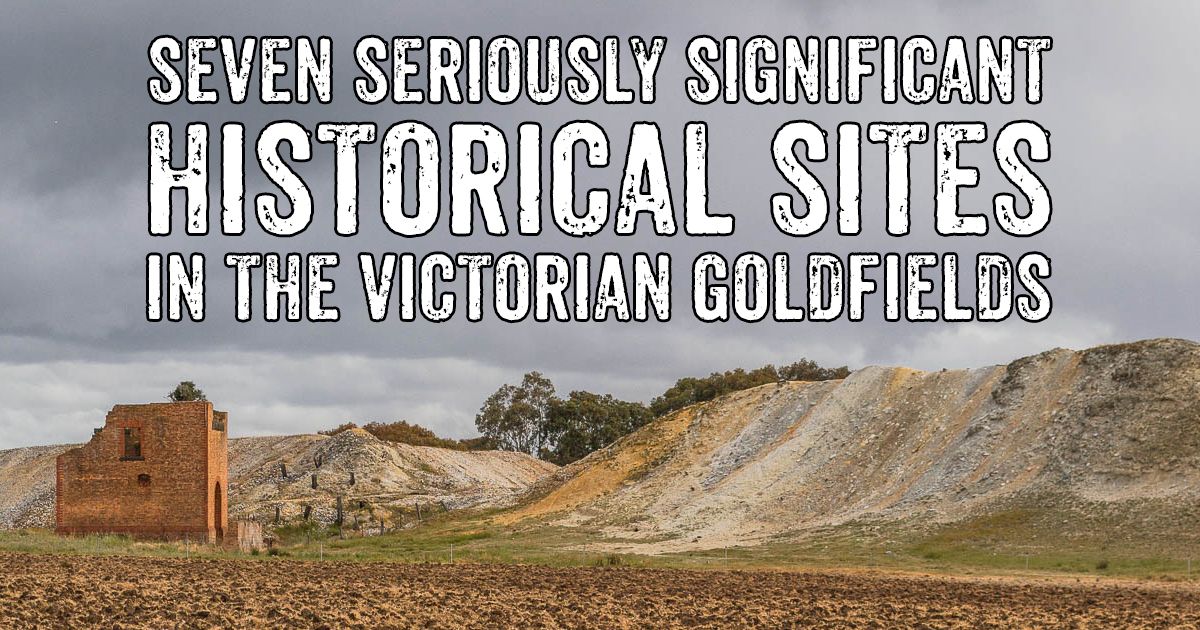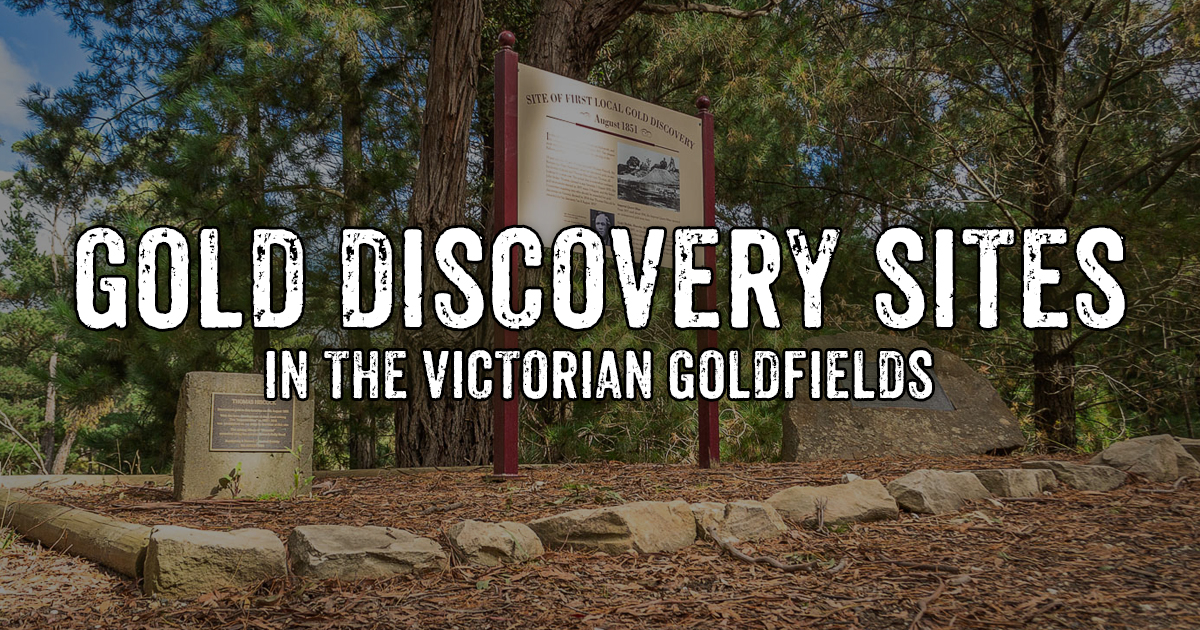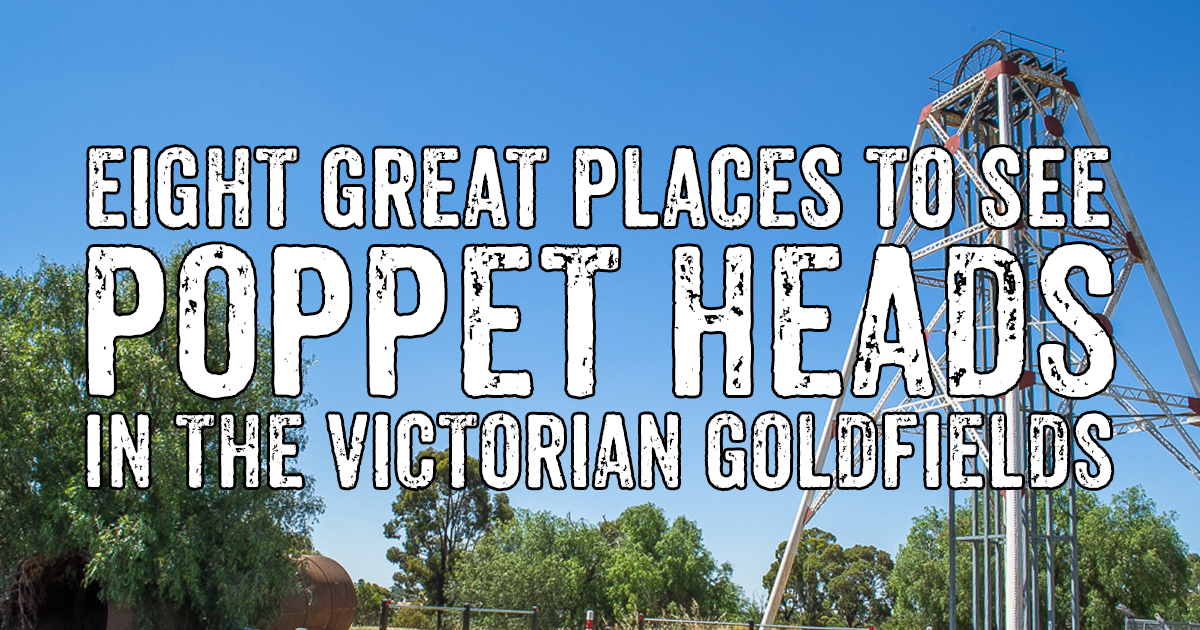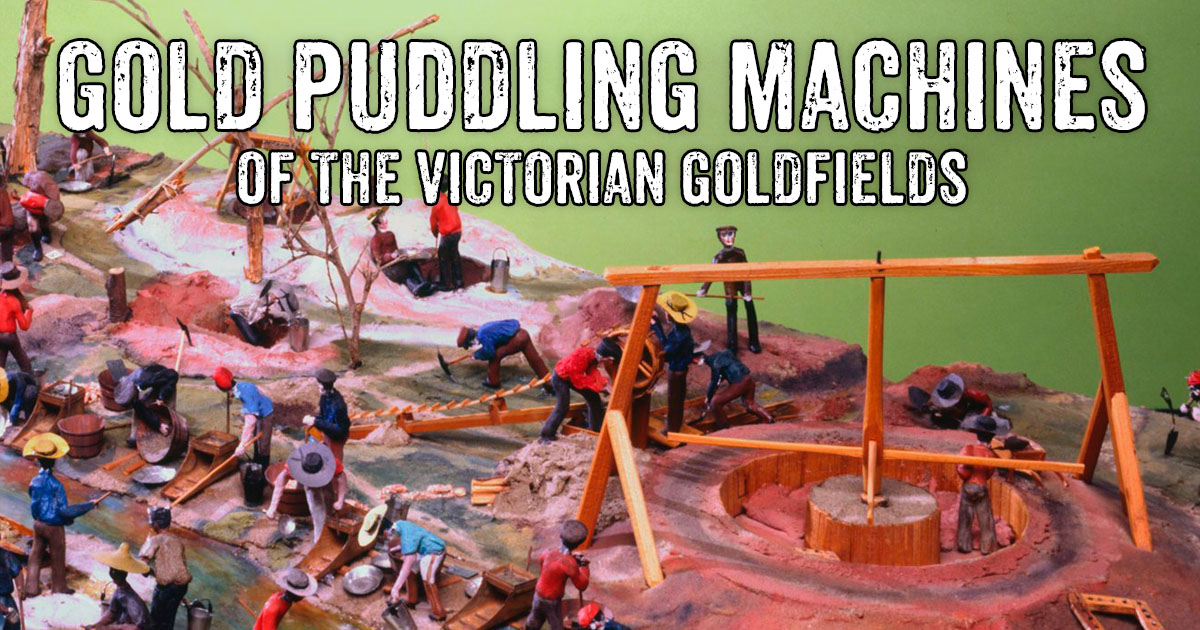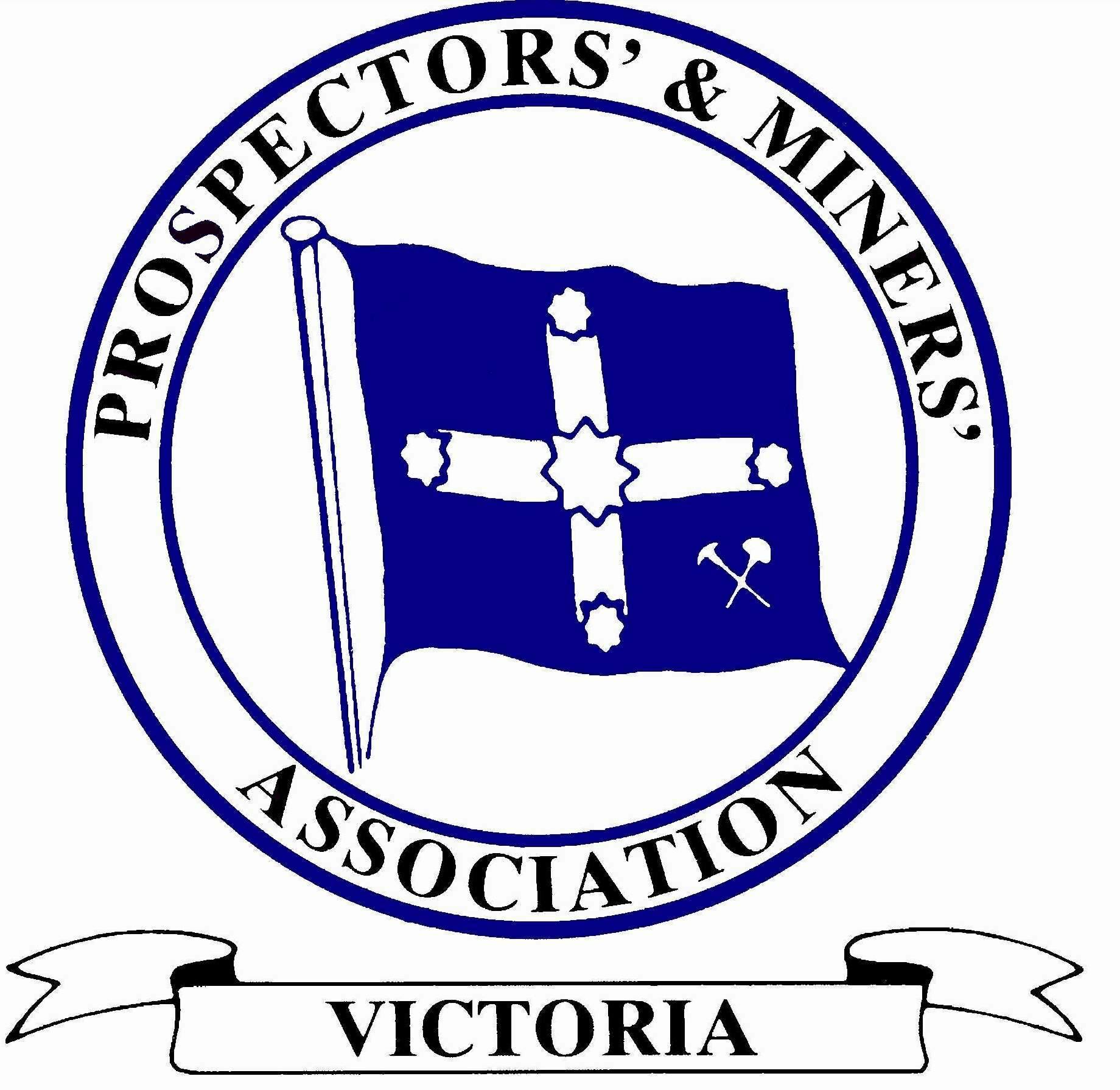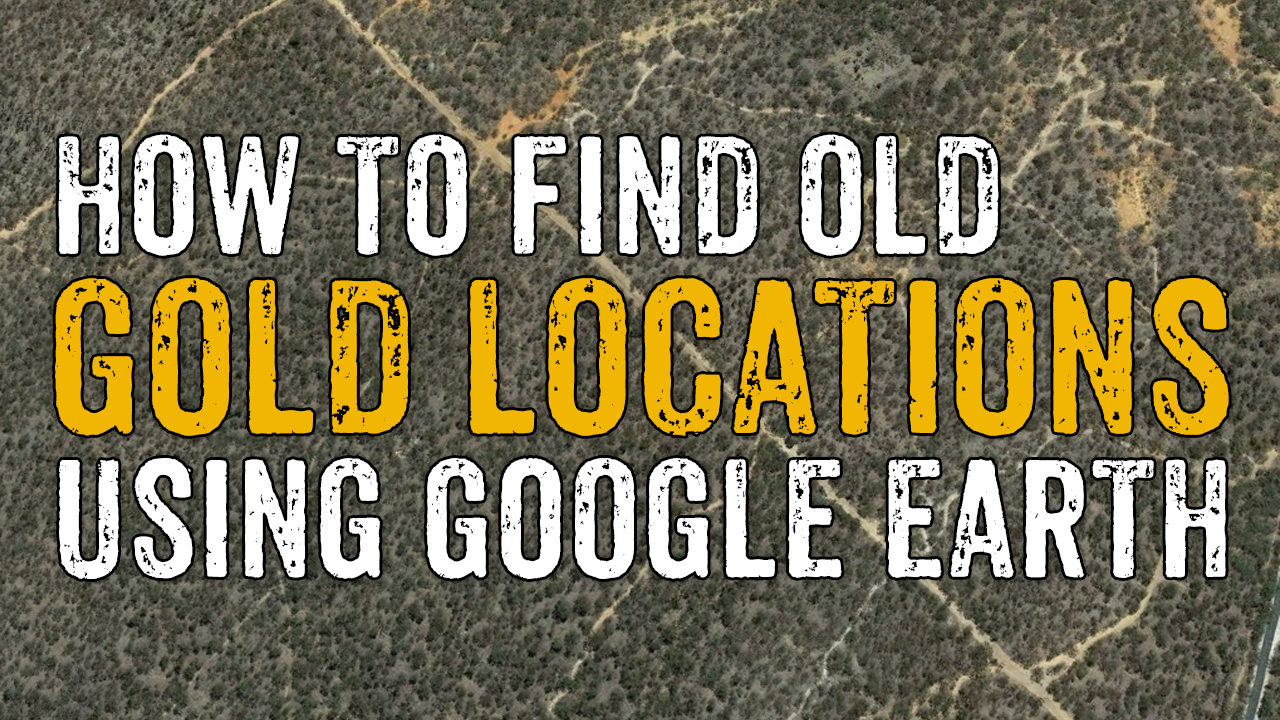
One of the
best ways to see the extensive footprints left behind by the rich mining
history of the Victorian Goldfields is through Google Earth!
Now, I spend
a ridiculous amount of time cruising around on Google Earth looking at
historical sites.
I know there's gotta be plenty of other people out there who
do the exact same thing, and if you're reading this then there's a good
chance you're one of 'em, so welcome! You're among friends.
Today I'm
going to quickly show you and talk about some of the many different remnants
that are left over from Victoria's busy mining days, including what they are,
how they appear from above, and what they look like in person.
You can watch the video on YouTube below, or continue reading to learn more.
We're going to start with one of the most characteristic features of the goldfields - and that is the diggings!
The Diggings
A lot of
these can't be seen in google earth because they are hidden in forested areas -
although you can sometimes spot the discoloration of the ground caused by the
mullock piles through the trees. This is the earth that was pulled out and
heaped up beside the shaft as the miner dug down to get at the gold-bearing
layer below.
In open fields
however, these diggings are very obvious.
If you check out the paddocks
alongside the main road through Majorca on Google Earth, you'll see hundreds of
these old shafts crowded together, as seen above.
Here's
another example out at McIntyre, shown above.
It's
incredible to think of what this scene must have looked like during the gold
rush, with hundreds of men all digging shafts alongside one another, to get at
the rich ancient riverbed buried below.
Next up,
let's take a look at paddocking!
Paddocking
Does this
barren red landscape look familiar? It's a fairly common sight throughout the
old goldfields of Victoria.
During the
gold rush, miners stripped large areas of shallow gold-rich ground down to the
bedrock and processed all the earth they removed using equipment such as tubs,
cradles, and puddling machines.
This method
of alluvial mining is known as paddocking, or surfacing, and it's fairly easy
to spot from above.
Look for
the conspicuous red or orange colour of stripped bedrock. They will be barren
areas which are very sparsely vegetated because all the topsoil in which
plants can grow has been removed.
These
paddocked areas are of particular interest because they tell us that there was
gold here, and lots of it, and it wasn't very deep. There's often still gold
left in the ground alongside the paddocking.
Hydraulic Sluicing
Another method of mining large areas of alluvial deposits was "hydraulic sluicing", where jets of high pressure water were used to blast the deposits from the surface and wash them down to be processed for gold.
There is a great example of this at Heathcote, as seen above, which is well worth checking out in person as it has resulted in quite a surreal and dramatic landscape.
Another place to check out is the Forest Creek Historic Gold Diggings over at Castlemaine, where you can check out the equipment used in hydraulic sluicing as well as the striking impact it had on the area.
Now let's take a look at mine sites!
Mine Sites
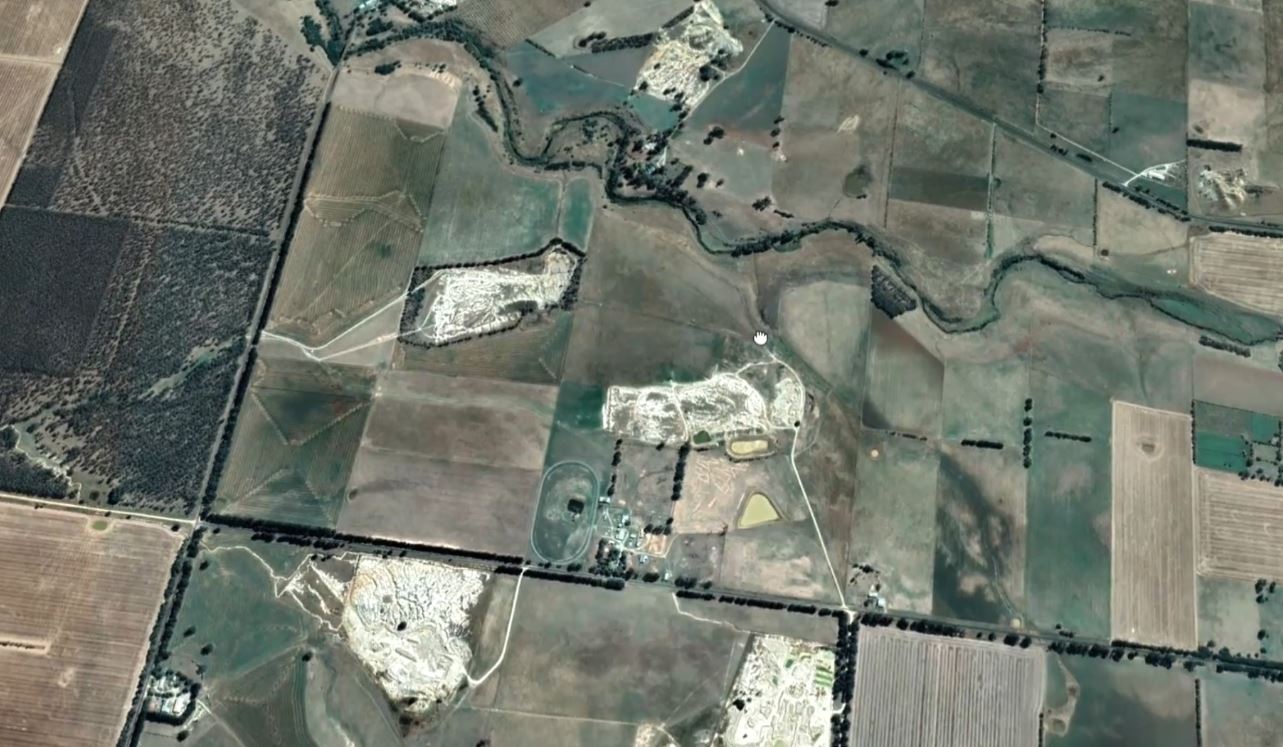
As well as
the mine shafts we just saw on the diggings, there were lots of big mines which
had extensive capital and equipment to run large-scale mining operations.The most obvious remnant of these old mines is the mullock heaps. Again, this is the waste material which was removed from the earth in the digging of shafts or drives to get at the gold bearing lead or reef underground.
These can in fact be quite massive and can be very interesting to go and check out. Maybe you wanna have a look from the bottom. Maybe you wanna climb up to the top.
Mine sites will sometimes still have remnants of their machinery foundations, where engines or pumps were installed.
You can often also spot the mine's tailings, which is the waste rock that's discarded after it has been processed for gold.
Cyanide Plants
The remains of cyanide plants can often be spotted from above by what remains of the vats - whether it is complete tanks remaining at the site, or an impression in the ground where the tanks once stood.
You'll typically see several vats lined up in a row, and the site will often be surrounded by the white remnants of the battery sand which was treated here.
Gold Puddlers
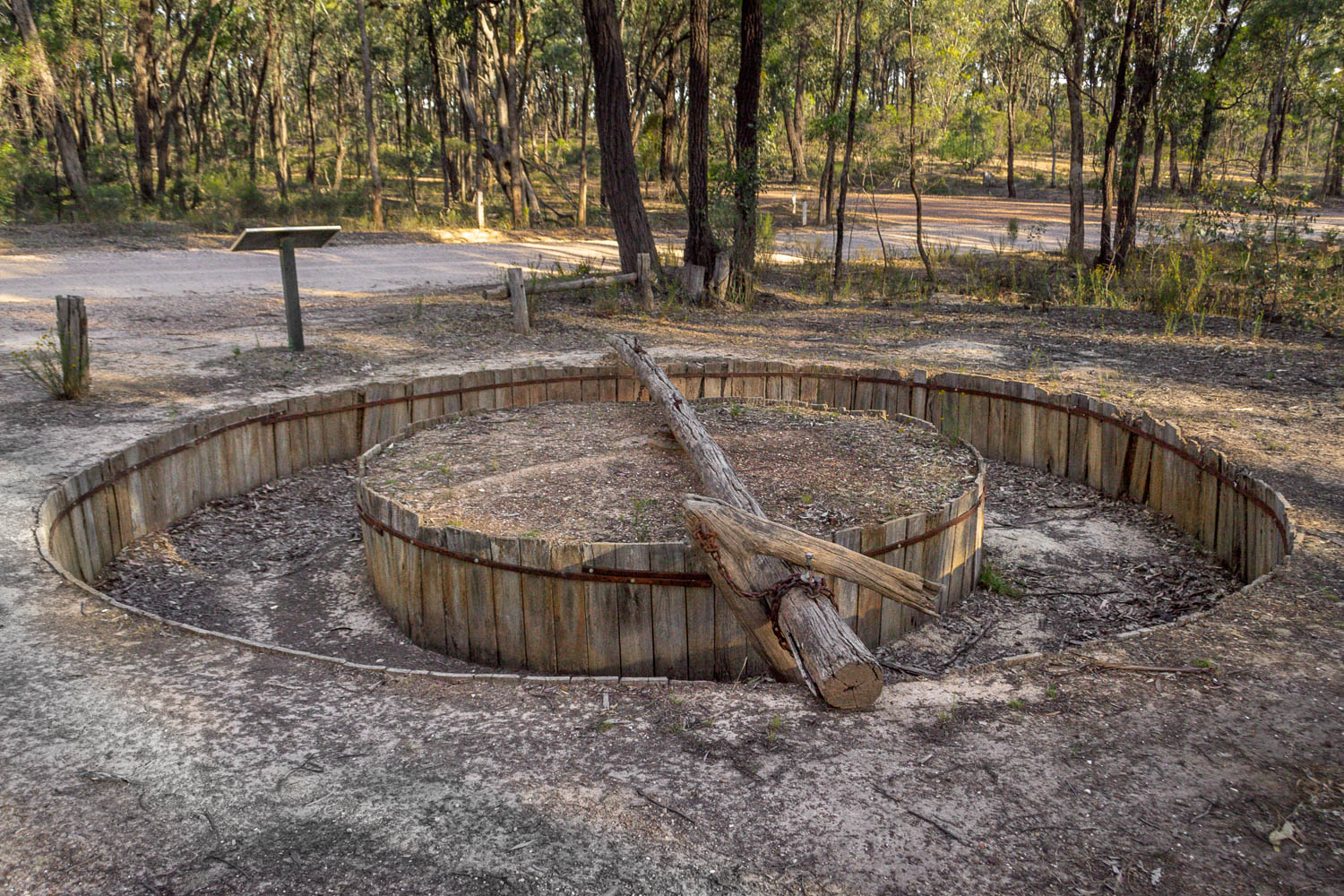
A gold puddler is a horse-powered machine used to process large amounts of gold-bearing clay.
In some areas, gold was trapped within hard lumps of clay and in order to retrieve it, these lumps needed to be effectively broken up.
Image source: State Library Victoria
A circular trench in the ground, lined with wood, was filled with gold-bearing clay and water.
A horse circled the trench and dragged a harrow through the mixture, breaking up the lumps and turning it into a runny sludge.
The gold and other heavy materials released from the clay would sink to the bottom, and the watery clay would be drained off from the top.
The heavy residue at the bottom of the puddler would then be cleaned up and washed for gold.
The remains of these puddling machines can be found scattered in abundance throughout the region's alluvial goldfields - and once you know what they look like, you see them all the time out in the bush.
These puddlers are an important part of Victoria's heritage, and must not be disturbed.
Dams
If you head out and take a look at these dams, you will often find remnants of mines, puddlers, stamp batteries, or eucalyptus distillery sites in the vicinity.
All these places needed water for their operations - whether it was to wash for gold with a puddler, to run quartz through a battery, or for the boilers which provided steam power for machinery.
For this reason, old dams can definitely be places of interest out in the bush.
Today they continue to serve a purpose for gold recovery in alluvial areas, providing a water source for high bankers and trommels.
Well that's all for now, I hope you enjoyed this quick Google Earth tour of the Victorian Goldfields!

